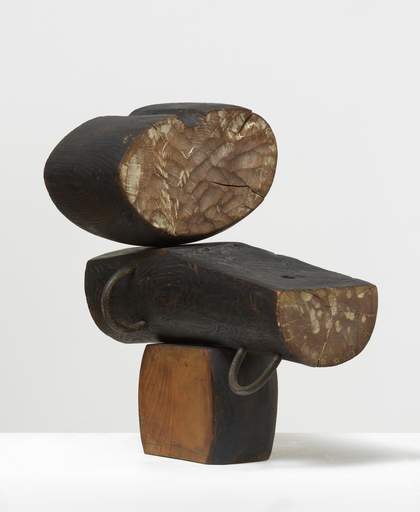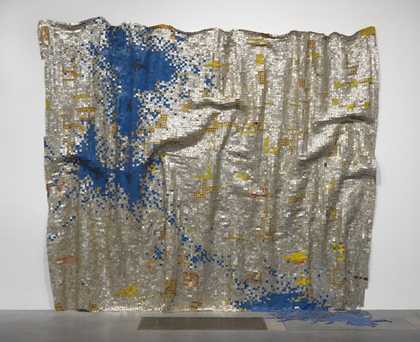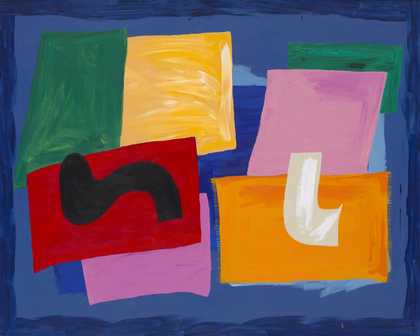
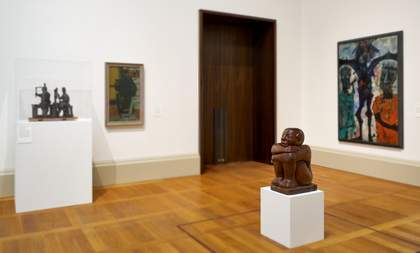
Ronald Moody
Be inspired by artist Ronald Moody and make your own sculpture that represents your outlook on the world
Your students don’t need to know anything about an artwork or artist to start exploring it. Discovering art can be new, exciting and sometimes confusing. There are no right or wrong ways to respond!
This 3D scan of The Onlooker allows you to see the sculpture from all angles. Play with perspective and zoom to get really close and explore the artwork in depth. Then, either in pairs or as a group, take it in turns to express your reflections on the artwork through conversation, sounds, or movement.
- How do you think the artist made this? What can you learn from the textures on its surface?
- Who do you think The Onlooker is? What do you think they’re looking at?
- Make the pose of The Onlooker and look out at the world around you. What do you notice? How do you feel?
About the Artwork
“I knew in the very depths of my being that sculpture was the only thing I really wanted to do"
Ronald Moody
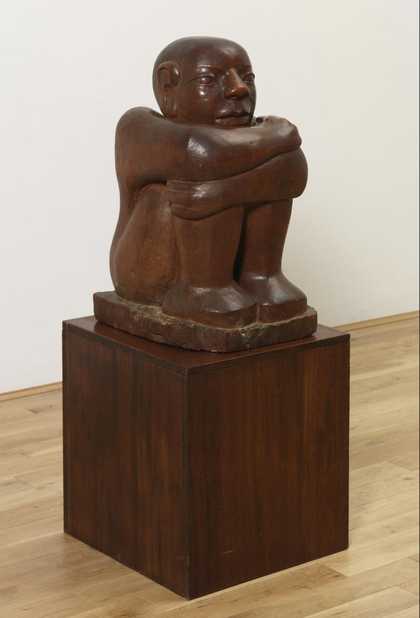
Ronald Moody
The Onlooker (1958–62)
Tate
The Onlooker 1958-62 is a wooden sculpture made by artist Ronald Moody. In this artwork, Moody explores the role of artists in society as he saw it. The sculpture is made from a piece of teak wood reclaimed from a ship; the wood would have travelled across oceans and seen different corners of the world. The Onlooker sits still and watches the world around them as things change over time.
Ronald Moody (1900-1984) described this artwork as reflecting his experiences of "friction" while living in both the Caribbean and Europe over his life. Born in Jamaica, he was inspired by ancient art from Egypt, India and China, making large wooden sculptures depicting different figures.
Make
Ronald Moody prompts us to think about the role of artists in society. In this activity, make your own sculptures to explore how you represent yourself.
Pose and sculpt
- Come up with a pose that represents how you see yourself in society. You could stretch out and make yourself big, proudly take up space – or you could hold yourself tightly like The Onlooker, giving yourself a strong base.
- Once you have your poses, get some clay or modelling material and get into small groups.
- Take it in turns to hold your pose for 1-2 minutes. Use your clay to sculpt each other's poses – this is a quick study, it doesn’t need to be perfect!
You could represent your classmate exactly as you see them or be more abstract – what do you think is important to include, and why?
Adapt for sensory learners
Use edible playdough or other squishy materials instead of clay. Explore the materials through sensory play.
Make a class performance that represents you. You could each make a gesture, sound, movement, or facial expression!
Play with texture
- Use mark-making tools and textured materials – fabrics, papers, objects with interesting patterns that you can feel – to press patterns onto your sculptures. You could even write words into the clay!
How does the surface change? What does this add to the stories in your sculptures?
Display and celebrate
- At the end of your lesson, bring all of your sculptures to the front of your classroom and look at them together.
- Find each other’s pieces and celebrate the artwork you’ve just made!
Extend
Now that you’ve practiced making sculptures with the clay, return to your own pose. Do you think it still represents you? Do you want to change anything about it?
Use a mirror to see your pose from a new perspective. Then, get some fresh clay and make a sculpture of yourself. Think about the decisions you make – what do you choose to include? What do you want your audience to understand about you?
How to use art makes
Making art is a powerful way to learn new skills, explore ideas and express ourselves creatively. Encourage your students to discover new materials, techniques and methods inspired by great artists at Tate.
- Prepare
- Project the artwork in your classroom and/or print off copies for your students to have in front of them
- Explore (10 minutes)
- Invite your students to respond to the artwork through the group activity
- Read the background information on the artwork and the artist
- Make (30 minutes)
- Follow the step-by-step instructions
- Use the Adapt section for accessible alternatives to this activity
- Use the Extend activity within the same lesson or in a future session

